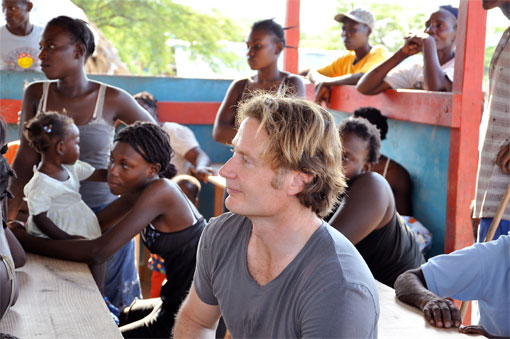Throughout the developing world, the rural poor—approximately 75 percent of the more than 2.7 billion people who live on less than $2 a day—are often isolated from formal markets. However, impact investing that generates social or environmental benefits and financial returns presents a new opportunity to address rural poverty with market-based solutions.
A recent study by J.P. Morgan Global Research and the Rockefeller Foundation estimates that the impact investing market will grow from $400 billion to $1 trillion over the next decade. This emerging asset class has played a critical role in fueling the growth of organizations like Root Capital, a nonprofit social investment fund that aims to grow rural prosperity by investing in agricultural businesses in Latin America and Africa.
It does so by providing capital and financial training and by strengthening market connections for small and growing businesses such as coffee and cocoa farmer cooperatives, mango exporters and companies selling drought-resistant hybrid seeds to small-scale farmers.
Most of the rural poor depend on agriculture as their primary source of income. According to the World Bank’s 2008 World Development Report, economic growth in the agricultural sector is twice as effective in reducing poverty as growth in other economic sectors.1 Access to stable export markets can put farmers and their communities on a path to long-term economic prosperity and environmental sustainability. In turn, access to working capital is critical for small and growing agricultural businesses to fill the gap between planting, harvesting and processing a crop, and receiving payment from buyers.
Unfortunately, small rural businesses often lack access to financing. Commercial banks typically do not lend in rural areas, or they demand payment schedules and hard collateral that cash-poor rural businesses are unable to provide. While microfinance addresses the financing needs of individuals and very small businesses, it has less reach in remote farming regions and tends not to serve agricultural businesses that need loans in excess of $25,000.
Our organization, Root Capital, was established in 1999 to fill that gap. Headquartered in Cambridge MA, and with offices throughout Latin America and sub-Saharan Africa, Root Capital focuses on lending to businesses that are too large for microfinance but are unable to secure credit from conventional commercial banks. Since Root Capital’s launch, we have provided more than $320 million in credit to 350 such businesses in 30 countries. These businesses represent more than 500,000 small-scale farm households—families that benefit from higher and more stable incomes and improved livelihoods. This has been achieved while maintaining a 99 percent repayment rate from borrowers and a 100 percent repayment rate to investors.
At the close of 2010, Root Capital’s lending program was 80 percent of the way toward operational self-sufficiency. In less than five years, Root Capital will cover the full costs of its core lending program through revenue from loan interest and fees. In the meantime, philanthropic contributions fill the revenue gap. Philanthropy also plays a role in underwriting Root Capital’s financial management training program for rural business leaders. The firm funds its loan portfolio with investments from foundations, corporations, accredited individual investors, socially responsible investment firms, and religious institutions, and 100 percent of these funds are loaned directly to small rural businesses…
ENDNOTES:
1. The World Bank, “World Development Report 2008” (Washington, DC: World Bank Group, 2007).



